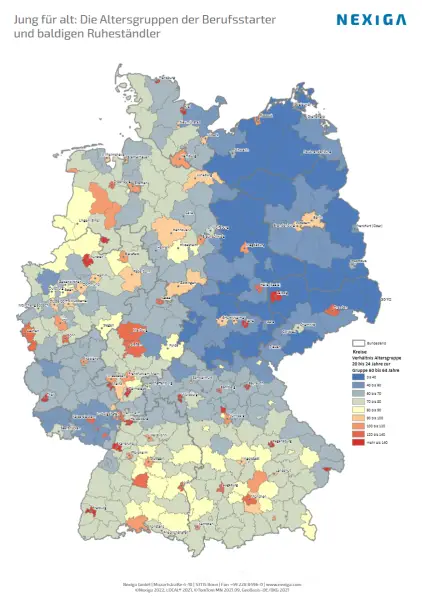The baby boomers retire
The Rheinnixe retires! The Rheinnixe, that is a Bonn institution: the small passenger ferry that connects the center of Bonn with the banks of the Rhine in Beuel. Recently, the captain died unexpectedly, and a successor with the necessary Rhine boatman's license could not be found. So the ferry service will now probably be discontinued for good(paid article).
A shortage of skilled workers is a problem that is becoming increasingly apparent throughout Germany. Now that the Corona crisis has been overcome, there are problems everywhere.

There is a shortage of skilled workers
Whether at airport security checkpoints, in the transport sector, in the trades, in the catering trade, in the healthcare sector or in industry. New workers are being sought everywhere. Deutsche Post is experiencing considerable delivery problems. Retailers and restaurants are reducing their opening hours.
With a moderate unemployment rate, there are vacancies in all sectors and everywhere, from harvest workers and security guards to engineers. The latest trend: companies such as Carglass and DHL are looking for (lateral) entrants in radio and TV commercials.
There are also several interesting vacancies at Nexiga.
The aftermath of the Corona crisis should slowly be over. The problem is more profound: the baby boomers are retiring, younger ones are hardly growing up. For example, the state agency IT.NRW shows on its website that the number of working-age residents between the ages of 19 and 65 in North Rhine-Westphalia is falling continuously. A decline of 6.6% is expected by 2040.
Demographic change
The latest issue of the German Pension Insurance "Zukunft jetzt" is also devoted to demographic change. After the baby boom of the 1950s and 1960s, the birth rate began to decline in 1965. At the same time, life expectancy increased. As a result, the proportion of the population of retirement age in the total population is increasing enormously (average age in Germany). Only immigration prevents the population from falling.
Nexiga's demographic database shows current population figures by age group as well as a population forecast for the years 2025, 2030 and 2035.
To illustrate the current employment problem, we have simply juxtaposed two figures for 2021 at the district level in the "Young versus Old" map: namely, the number of people in the 60 to 64 age group, i.e., those who will retire in the foreseeable future, and the group, 20 to 24-year-olds, i.e., career starters and students.
Young for old - age groups of career starters and soon-to-be retirees

The map shows the number of young people per 100 people of pre-retirement age. The national average is currently only 78.5 people in the young group for every 100 in the old group.
This is creating a deficit that will worsen in the coming years. And from a regional perspective, it is clear that rural areas in particular are being "bled dry. In many parts of the new federal states, only half as many people will be able to work in the next few years, and in the Spree-Neiße district of Brandenburg, only slightly more than a quarter.
The ratio is balanced in the metropolises of Hamburg, Berlin and Munich. Only university cities such as Münster, Bonn, Freiburg, Trier and Passau actually have a significant surplus of young people.






